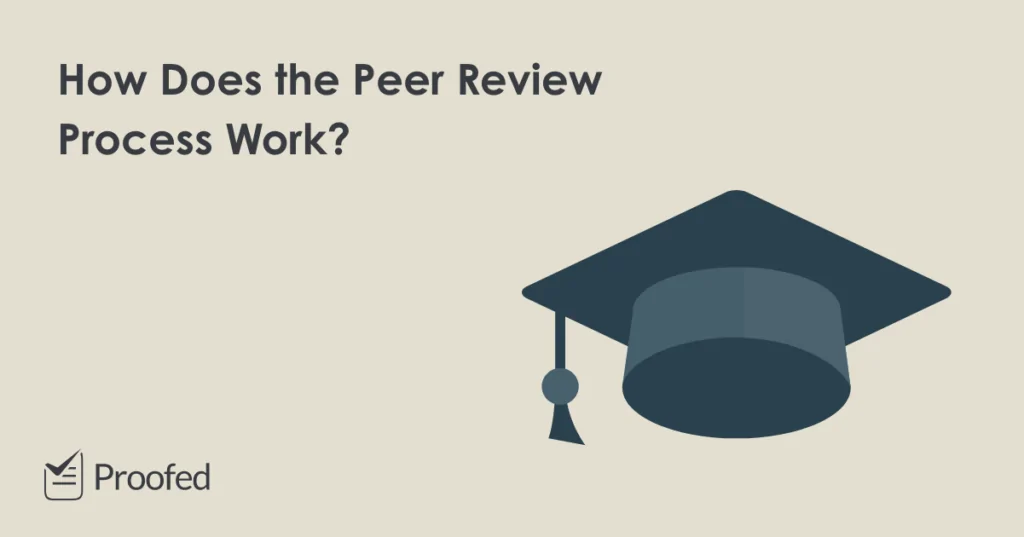Peer review is a vital part of academic publishing. And if you’re submitting a research paper to a journal, you’ll need to negotiate the peer review process. But how does this work? In this post, we set out the basics.
What Is Peer Review?
The peer review process is quality control for academic writing. Its aim is to ensure journals only publish high-quality research. This works as follows:
- An author or authors write and submit an article based on their research.
- An editor assesses the article and invites other academics who work in the same area to review it (these are the ‘peers’ from ‘peer review’).
- The reviewers evaluate the article, providing feedback to the author and a recommendation on whether the journal should publish it.
- If required, the author makes changes based on the review.
- Once the editor is satisfied, they approve it for publication.
The details of this may vary from journal to journal (e.g. there are different types of peer review). But all quality academic journals use peer review of some kind, so it’s important to understand the processes involved.
What Are the Possible Outcomes?
When the reviewers have read your article, they will provide feedback to the editor. After that, you will usually get one of five responses:
- Unconditional acceptance – The journal accepts the article without any revisions. The editorial team will then prepare it for publication.
- Conditional acceptance (minor revisions) – The reviewers like your article but spotted a few things that need clarifying or correcting. You’ll then need to make revisions based on the reviewer feedback, which the editor will check before approving it for publication.
- Conditional acceptance (major revisions) – The journal wants to publish the article, but you will need to make significant revisions first. After you’ve made revisions, the reviewers will check it again to see whether you addressed the issues raised previously. And assuming they’re happy with the changes, the editor will approve it for publication.
- Conditional rejection – The journal is not interested in the article in its current form. However, if there are elements of the paper they find interesting, they may invite you to rewrite it and submit a new version.
- Full rejection – The journal has decided it is not interested in your article. This may be because the topic falls outside the scope of what they publish. Or it may simply fail to meet the technical requirements for publication (e.g. it was under the minimum word count).
This process can be very competitive and it is rare to get an unconditional acceptance. Even being asked to make major revisions is a success. As such, you may need to have thick skin as an academic writer!
Find this useful?
Subscribe to our newsletter and get writing tips from our editors straight to your inbox.
Even if you’re not successful, though, every peer review is a learning opportunity. And if you do your research, pick the right journal, and follow its submission instructions, you can boost your chances of publication.
Expert Academic Proofreading
Before submitting an article to a journal, get it proofread. This will help you communicate your ideas clearly and concisely, as well as making sure your article is error free, increasing the likelihood of it being published.
To find out more, submit a free trial document for proofreading today.



